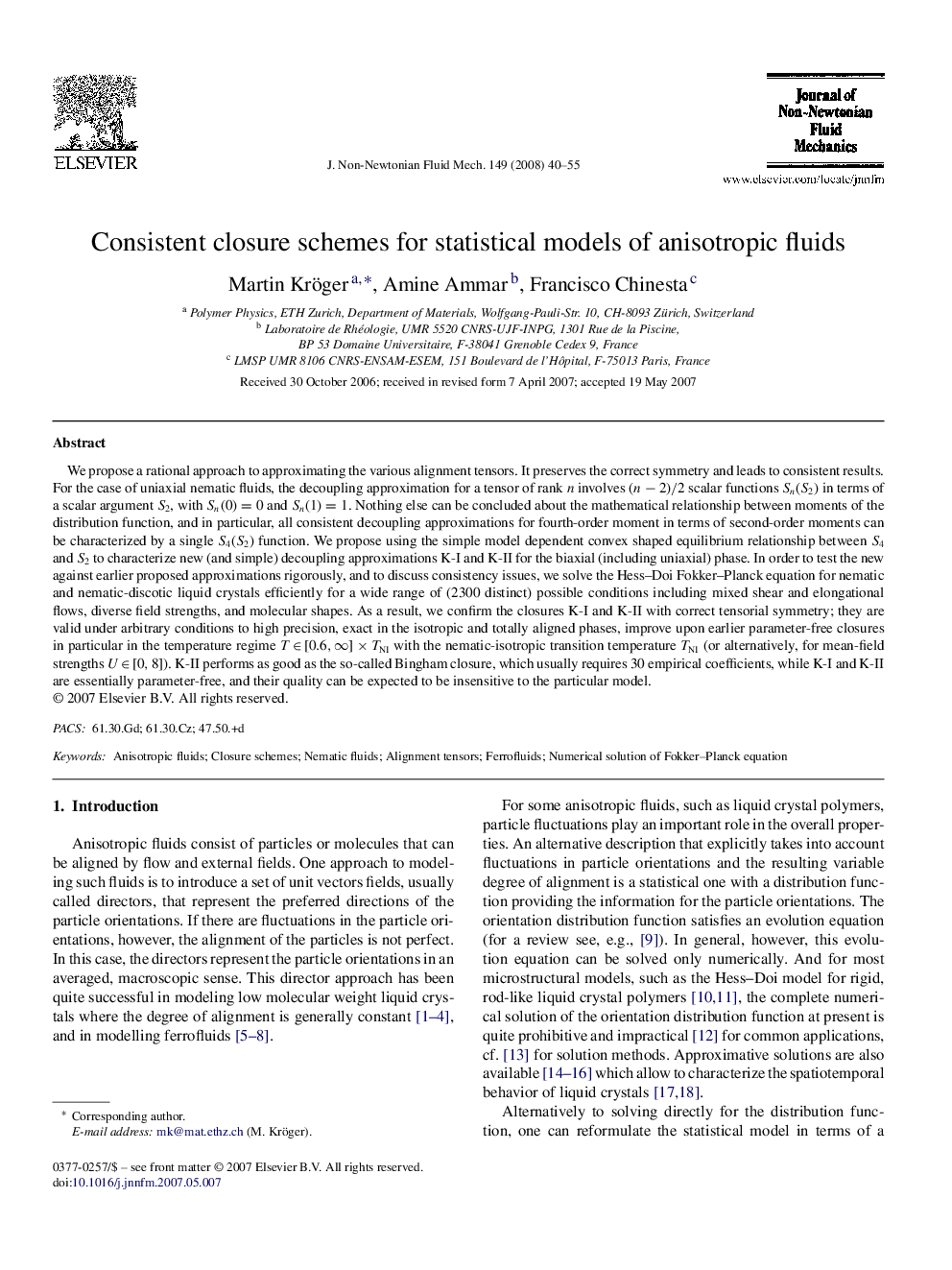| Article ID | Journal | Published Year | Pages | File Type |
|---|---|---|---|---|
| 671524 | Journal of Non-Newtonian Fluid Mechanics | 2008 | 16 Pages |
We propose a rational approach to approximating the various alignment tensors. It preserves the correct symmetry and leads to consistent results. For the case of uniaxial nematic fluids, the decoupling approximation for a tensor of rank n involves (n−2)/2(n−2)/2 scalar functions Sn(S2)Sn(S2) in terms of a scalar argument S2S2, with Sn(0)=0Sn(0)=0 and Sn(1)=1Sn(1)=1. Nothing else can be concluded about the mathematical relationship between moments of the distribution function, and in particular, all consistent decoupling approximations for fourth-order moment in terms of second-order moments can be characterized by a single S4(S2)S4(S2) function. We propose using the simple model dependent convex shaped equilibrium relationship between S4S4 and S2S2 to characterize new (and simple) decoupling approximations K-I and K-II for the biaxial (including uniaxial) phase. In order to test the new against earlier proposed approximations rigorously, and to discuss consistency issues, we solve the Hess–Doi Fokker–Planck equation for nematic and nematic-discotic liquid crystals efficiently for a wide range of (2300 distinct) possible conditions including mixed shear and elongational flows, diverse field strengths, and molecular shapes. As a result, we confirm the closures K-I and K-II with correct tensorial symmetry; they are valid under arbitrary conditions to high precision, exact in the isotropic and totally aligned phases, improve upon earlier parameter-free closures in particular in the temperature regime T∈[0.6,∞]×TNIT∈[0.6,∞]×TNI with the nematic-isotropic transition temperature TNITNI (or alternatively, for mean-field strengths U∈[0,8]U∈[0,8]). K-II performs as good as the so-called Bingham closure, which usually requires 30 empirical coefficients, while K-I and K-II are essentially parameter-free, and their quality can be expected to be insensitive to the particular model.
